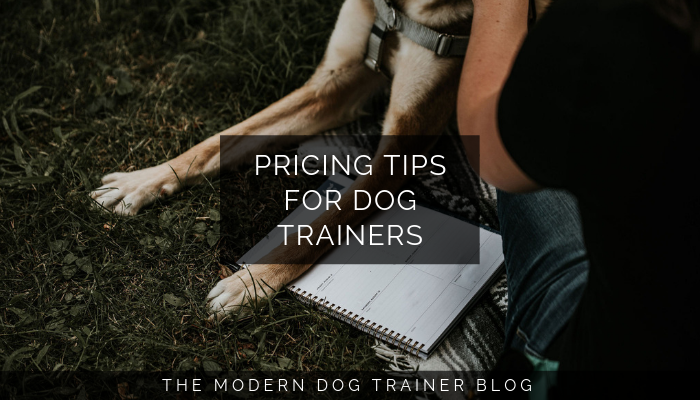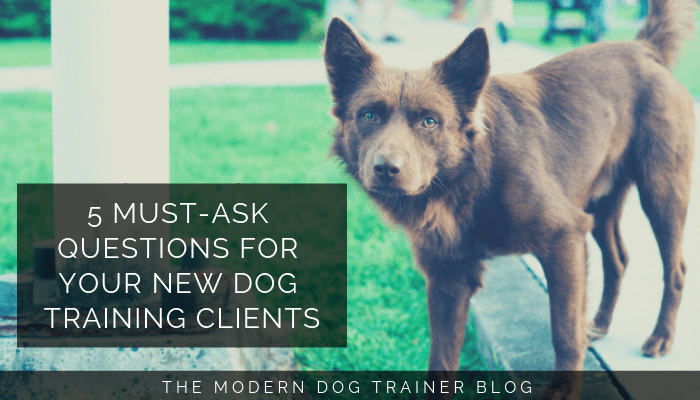Each year we do our best to put together a fresh list of conferences that interest professional dog trainers. (You can see previous years here: 2018, 2017, 2016, 2015.)
 We take a look at what recurring and new conferences are coming up that will provide excellent continuing education opportunities for amateur and professional dog trainers located in the United States. We also include some outside the US since conferences are the perfect reason to travel outside the continent! (And we know a few of you are located outside the US as well.)
We take a look at what recurring and new conferences are coming up that will provide excellent continuing education opportunities for amateur and professional dog trainers located in the United States. We also include some outside the US since conferences are the perfect reason to travel outside the continent! (And we know a few of you are located outside the US as well.)
NOTE: Only conferences that provide updated information online at the time of writing this article are included.
We don’t limit these conferences to domestic pet related conferences since you can learn a lot working with less domesticated species. Working with other species is a great way to improve your understanding of learning theory, management techniques, handling techniques and much more that can be applied to the various situations you can come across working with domestic animals.
October 30 – November 2, 2019 | Portland, Oregon
I attended my first APDT conference back in 2014. I was impressed with the friendliness of the staff and with how approachable all the attendees were. I used their online forum to find roommates for my stay and am still close with them today. (I highly recommend you find roommates for at least your first animal training conference!)
February 23 – 24, 2019 | Hurst, Texas *Fewer than 50 tickets remain!*
This conference is one of the most respected and science-based conferences available. Trainers of all kinds of species attend this conference. This year Dr. Alliston Reid will be the keynote speaker presenting on his research studying how animals acquire behavioral skills in a similar way to humans. Other speakers include: Ken Ramirez, Steve White, Alexandra Kurland, Dr. Jesús Rosales-Ruiz, Barbara Heidenreich, Emily Larlham, Dr. Joe Layng, and Hannah Branigan.
May 17-19, 2019 | Lebanon, Pennsylvania *Registration opens in January 2019*
Top trainers in Obedience, Rally, Agility, Nosework, Freestyle, Rally-FrEe and other dog sports teach online courses at the Denise Fenzi Dog Sport Academy. I have personally taken several of these classes and cannot recommend them enough for any trainer looking to up their game at any skill level. Once a year they gather in one place to teach, play, and learn in person at the Training Camp.
May 17-19, 2019 | Nottingham, UK *Fewer than 50 tickets remain!*
If you live on the other side of the pond, this is a great opportunity to see some amazing presenters. The presenters at Woof! 2019 include: Dr. Julie S. Vargas Ph.D, Chirag Patel, Eduardo J. Fernandez Ph.D, Emelie Johnson Vegh, Eva Bertilsson, Kay Laurence, Ken McCort, Marty Becker DVM, and so many more brilliant minds in the animal behavior world. This conference is also highly focused on the science behind behavior and states their mission as “Empowering learners through the understanding and ethical application of behavior analysis.”
January 25 – 27, 2019 | Portland, OR
March 22 – 24, 2019 | Washington, DC
October 25 – 27, 2019 | Cheshire, UK
ClickExpo, run by the Karen Pryor Academy, is a great place to learn how to apply clicker training techniques to a variety of situations and species. I attended the Southern California expo in January 2018. I stayed at the conference hotel and it was extremely convenient to sleep, eat, and attend lectures in the same place. ClickerExpo offers basic registration with the option to upgrade a few things.
You can choose to add-on organized events such as lunches, dinners, and round table discussions for exclusive access to the teachers and presenters that attend the conference. (I chose not to add on extras when I attended, but would highly recommend it as I felt like I was missing out. Many attendees attend most or all of these extras. I should also note that some meals are restricted to KPA graduates as well.)
ClickerExpo offers certain tracks you can choose from including “Aggression” or “Foundations” if you want to hone your skills in a certain topic.
April 7-12, 2019 | Portland, OR
Animal welfare is often a topic that is not commonly discussed in dog training, but is an enlightening and empowering topic to dive into. As professionals, we ultimately are responsible for improving the welfare and management of dogs and we have a lot to learn from the leaders in this subject matter that work with other species. When you work with species that are not domesticated, there are certain considerations and assumptions that you can’t take. Seeing these different perspectives can be eye opening for dog trainers.
April 24-27, 2020 | Philadelphia, PA
With the 2018 conference already sold out, I thought I’d include the next conference to give you advanced notice. Among the presenters are some recognizable names from the pet dog training world such as Patricia McConnell, PhD, Leslie McDevitt, and Laura Monaco Torelli. You’ll also hear from university researchers, service dog training experts, and military and police dog training industry leaders.
From breeding to nutrition to puppies transitioning to working dog status – no topic is off limits at this highly respected working dog conference. This is a great opportunity to learn from the best of the best out in the field.
July 26- 28 2019 | Battle Ground, IN
This event with Ken McCort at Wolf Park offers the unique experience of learning about the science behind training methods while also giving you the unique and exhilarating experience of interacting directly with their wildlife – including wolves. This even offers 3 days of full of activities. Events at Wolf Park and Ken McCort are highly sought after because of this amazing experience.
April 4 – 7, 2019 | Houston, TX
At this conference you can learn about the latest scientific research in animal behavior as well as the practical application of those findings and theories. This is among one of the most affordable conferences available and gives you the opportunities to learn from some of the best in the industry. You don’t have to be an IAABC member to attend, but you will receive perks like a discounted rate and free online streams of the conference (and other online webinars).
April 26 – 28, 2019 | Portland, OR
This three day event will help you take a deep dive into aggression in dogs (and cats) with a variety of highly qualified presenters with specialties in aggression. Some interesting topics that will be covered are the liabilities of working with aggression, neuroscience, resource guarding, behavior modification procedures, and much more. For anyone looking to work with aggression cases with a force-free approach or learn about bite prevention strategies, this looks to be a must-attend conference.
Stay up to date with the latest dog training business tips and resources!
Subscribe with the form below and join our Facebook group: Startup Tips for Modern Dog Trainers.





 After having the opportunity to talk to many other dog trainers over the years, I’ve discovered some trends that I want to bring to your attention.
After having the opportunity to talk to many other dog trainers over the years, I’ve discovered some trends that I want to bring to your attention.
 As dog trainers, we often have a limited budget to start up and run our businesses. Fortunately, there are a few free tools available to improve your efficiency and make your business run smoother and faster without extra financial burden.
As dog trainers, we often have a limited budget to start up and run our businesses. Fortunately, there are a few free tools available to improve your efficiency and make your business run smoother and faster without extra financial burden.




 Being a professional dog trainer can be an incredibly fulfilling profession. You can work for another company, but most quickly find out that to make a sustainable living, it’s best to run your own business.
Being a professional dog trainer can be an incredibly fulfilling profession. You can work for another company, but most quickly find out that to make a sustainable living, it’s best to run your own business.


